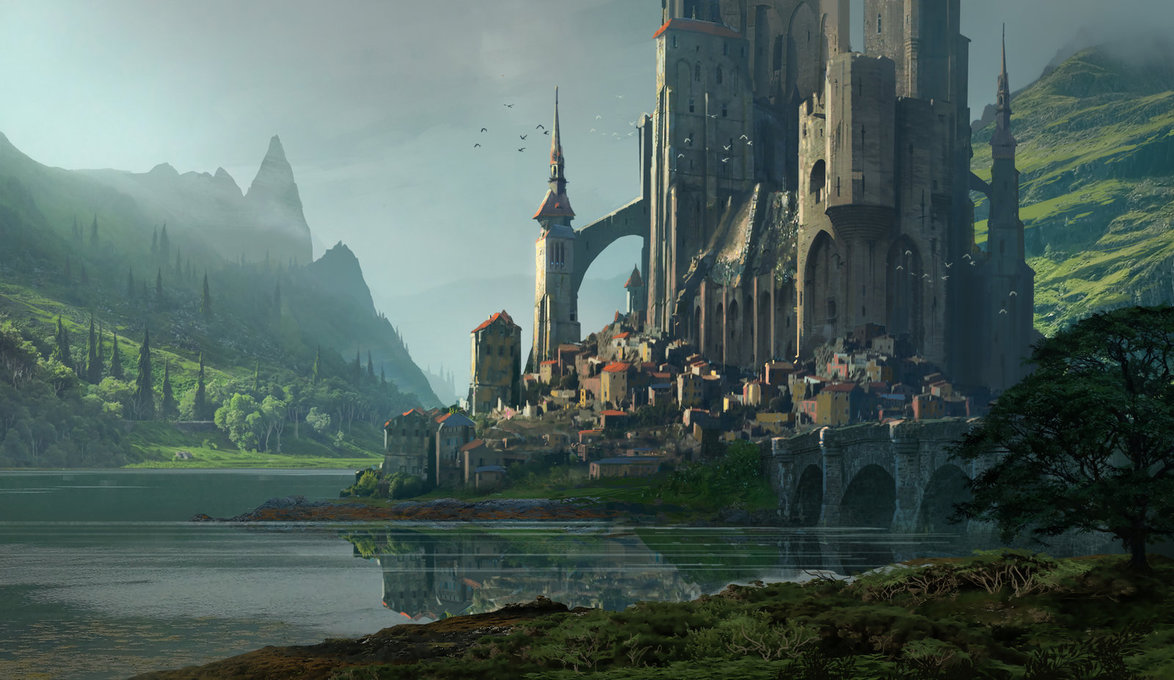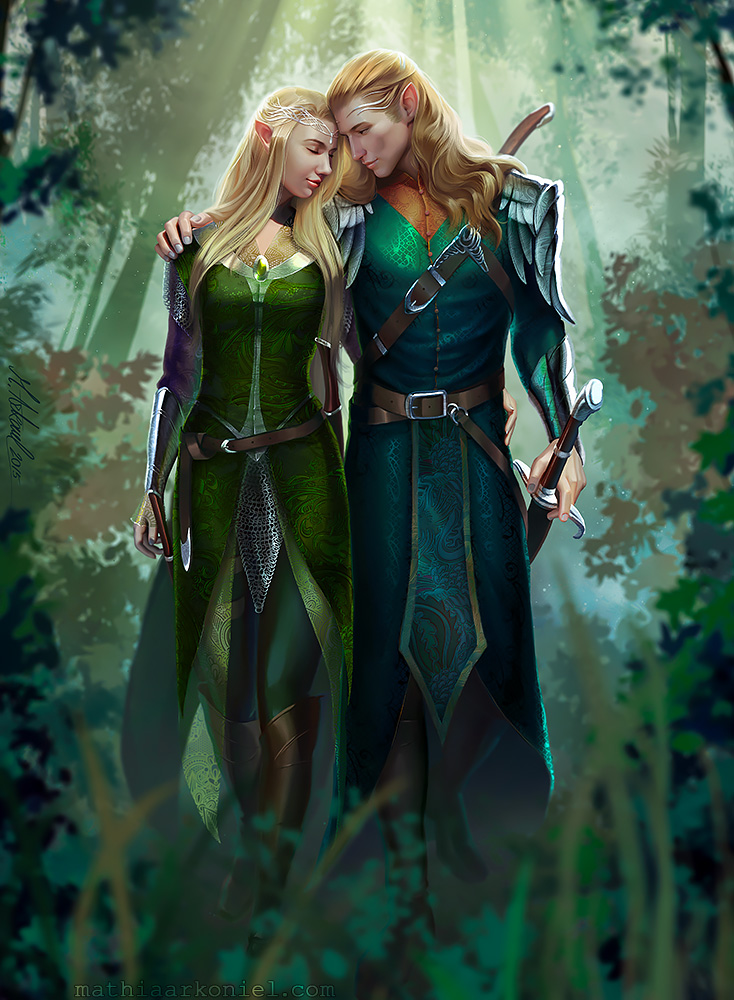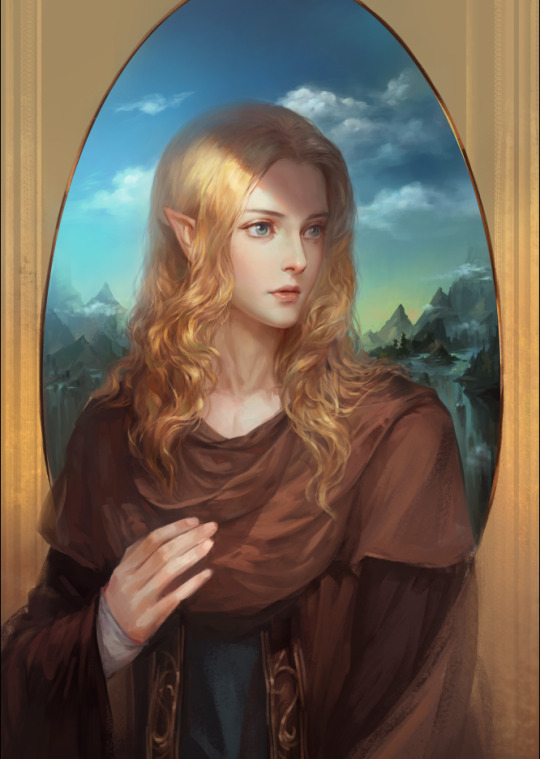High Elf
High elves are a subrace of the elves, an ancient magical race with origins in the mirror realm of the Feywild. While both high elves and wood elves diverged from their cousins, the dark elves or drow during the Dawn Era, high elves and wood elves are extremely closely related, with only a few minor biological differences between the two subspecies. High elves are generally characterized as having paler, smooth skin, fair hair which ranges from white to gold to warm brown. While high elves once dominated the populations of the Palladian Empire, their slow gestation rates and the increasing pressure to integrate with humans and other mortal races has led to a population decline. Bastions of high elves can still be found in parts of Holos, most notably in the Imperium of Iskendra in Nioa, the Kingdom of Faleret in Auloa and the Tao-Tē Dynasty in Iroa. Pockets of high elves can even be found in the Feywild, where they intermingle with their basal fey ancestors the eladrin.
Basic Information
Anatomy
Like all elves, high elves are characterized by their fey grace and fine features that make them seem decidedly ancient and arcane. They are slighty shorter than humans, ranging from under 5 feet to just over 6 feet tall. High elves are the tallest of all elves though, and are usually between 5'4"-6'1". They are known for being slender and for seeming to carry less weight for their mass, with little to no difference between the sexes in terms of weight. High elves range in skin tone across Holos but are generally paler than humans or wood elves in the same regions; with hues ranging from copper to bronze, to milky white. Their hair too, has natural variation in color with shades of white, gold, and warm brown streaked with fey blue, green, or purple—depending on the purity of their lineage. Elves struggle to grow facial and body hair, and usually only sport beards into their final century of life.
Genetics and Reproduction
Because of their long life spans, elves have the longest gestation period of any mortal, clocking in at around five years. Much of that time, an elven fetus remains in the embryonic stage of development. The elven fetuses require certain conditions to be met in order to grow to the proper stages. This includes the mother consuming important herbs, resting under a clear night's sky, and getting regular exercise. All of these activities are things that would be easy for the elf's ancestor to do in the Feywild, but present challenges in the Material Plane. Elf mothers rarely miscarry, instead the embryos are able to go into a stasis, waiting until the right conditions are met in order to advance in their stage of embryonic development.
Additionally, high elf women have far fewer eggs than other mortal races. The average number of high elf children is two, with twins being common and with five total offspring being the maximum. This further constrains population growth and ensures that every child born to an elven family has a great deal of pressure to continue the species.
Because of the complexity of elven reproduction, high elves in the Material Plane have seen their numbers drastically decline over the past millennia leading to cultural shifts like elven purity standards and inter-community bride exchanges.
Growth Rate & Stages
High elves are the longest lived of the mortal races, regularly reaching 300 years old and some even living up to 500 years. The adolescent and subadult periods for high elves is about twice as long as it is for humans, with elves reaching sexual maturity around age 30 and emotional maturity around age 50. Most communities of high elves don't consider children to have achieved adulthood until age 40, upon which they are permitted to take spouses and leave the care of their parents.
Ecology and Habitats
Like all elves, high elves have a natural predisposition for living in the wild places of the world—particularly habitats that have lush foliage. However, unlike the other elves, high elves have embraced a kind of urban environment, living in and constructing cities and settlements outside of secluded woodlands. While high elves are highly adaptive to new environments, they do seem to require more territory in order to feel secure than humans or other mortal races.
Dietary Needs and Habits
High elves, like other elves, can survive on far less food than most other mortal races. Moreover, most elves gain more nutrition from consuming food raw or only slightly cooked than other races.
Additional Information
Facial characteristics
High elves are known for their high cheekbones, their colorful eyes, and their tapered ears which reach back past their skull. Their faces are usually quite angular, though again they lack the wrinkles of most mortal races until their final centuries.
Geographic Origin and Distribution
High elves remain the dominant race in few places in Holos. They are most common in the Imperium of Iskendra in Nioa, the Kingdom of Faleret in Auloa, and the Tao-Tē Dynasty in Iroa. Other pockets can be found in Hakoa and the aformentioned continents, though no elves are native to Teroa. Some high elves have relocated to their ancestral homeland of the Feywild, where breeding and population pressures are more in their favor. However, in the Feywild, high elves are often forced to integrate with their basal elven ancestors, the eladrin and their more primal societies.
Average Intelligence
High elves consider themselves to be the most intelligent of the mortal races. There may in fact be some truth to this, given the speed at which high elves are able to discern patterns and react to new information. However, it may also be that because of their extremely long life spans, high elves are able to increase their knowledge over time without as much of a rush and thus are able to retain knowledge better over longer periods of time.
Perception and Sensory Capabilities
Like other elves, high elves have exceptional perception abilities. They are proficient in perception. High elves, despite being the most "civilized" of the elves retain their 60 ft. darkvision their ancestors evolved to peer through twilit forests and the starry skies.
Civilization and Culture
History
High elves first diverged from the wood elves after the Sundering Arcana. While both subspecies gained access to arcane magic, the high elves seemed to have been blessed with a more innate kind of magic that was connected to their fey roots. These elves endeavored to use this new magical ability in order to preserve the hierarchy and position of their race from the Palladian Empire and into this new Sundered Age. The wood elves rejected this notion, believing that the Sundering Arcana was a sign that the elves must return to their roots as a rural, wild people and reject the trappings of power they had gained during the Palladian Era. These elves retreated to the wild places of the world, where they remain to this day. The high elves saw this as reverting to the barbarism of the other mortal races, despite the fact that by 362 S.E., most wood elves have more fey DNA than their high elf counterparts. Those high elf societies that maintained their blood purity did so by implementing strict caste systems and using the cultural social order of the societies they built to their advantage. However, despite their best efforts, the population of high elves continues to decline, due in large part to the long gestation periods of high elves and their inability to produce more than five offspring in a lifetime.
Genetic Ancestor(s)
Genetic Descendants
Origin/Ancestry
Fey
Lifespan
300-500 years
Conservation Status
Declining
Average Height
5'4"-6'1"
Average Weight
100-150 lbs.
Average Physique
High elves are known for their graceful bodies, their fine features, and their enduring youth. After their first fifty years of life, elves hardly age, only sporting thin wrinkles and facial hair in the last century of their lives. Despite their slender frames, high elves are athletic and have excellent dexterity and musculature perfectly suited for quick bursts of speed and agility.
Related Organizations
Related Ethnicities





Comments